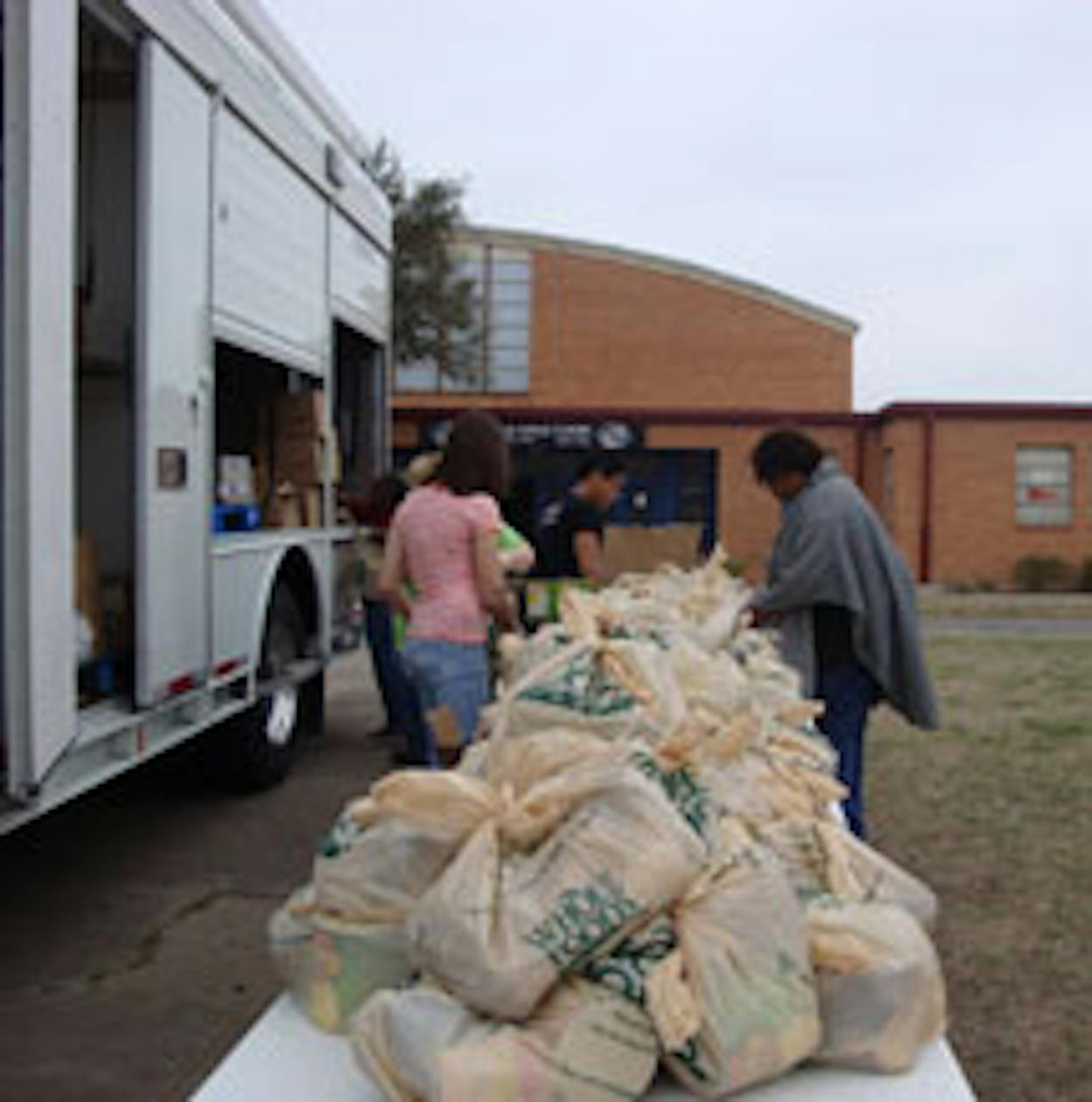LeaVern Johnson is a 66-year-old retired grandmother with seven grandchildren living in her house. Sometimes she has to choose between the grocery store and paying her rent. But in volunteering for the Capital Area Food Bank’s mobile food pantry at the Alternative Learning Center in East Austin, she can stock up on food for the month while also helping out her community.
“The kids had to eat dry cereal this morning,” Johnson said. “Thank goodness for the milk I got today—that won’t be happening [again] for a while.”
Johnson is not alone. Yojhana Espinosa is a mother in a household of six who was just denied eligibility for food stamps. Freddie Robinson, a middle-aged man with a family of three, was recently laid off from General Motors.
Virginia Ruiz has come to the ALC location four times, where she signed up for food stamps after finding out she was eligible. With three kids, the food she receives from the food pantry allows her to save money for diapers or the utility bill.
Hunger often falls under the radar, but there is a great need here in Texas for food banks and other food services. However, food pantries such as this one face challenges in the future as donations and retail partners decrease and consumer need increases substantially, placing yet another burden on lower-income families.
According to Feeding America, 14.8 percent of Texans are “food insecure,” which means that they lack access to enough food to meet their basic needs due to financial hardship. One in five adults and one in four children are hungry—that’s 41,000 children under the age of eighteen in Travis County alone who go hungry each day.
“Hunger and food insecurity looks very much like the demographics across the board,” says David Davenport, president and CEO of the Capital Area Food Bank. “It touches ethnic groups exactly the same, but from an age standpoint, typically it’s on the ends—children and seniors.” A report from Hunger in America found that 23 percent of children and 12 percent of the elderly in Central Texas are living in poverty.
Although food stamps are one of the best ways to receive assistance, food banks try to supplement where they can. The Capital Area Food Bank is meeting the needs of the greater Austin community with twenty “Fresh Food for Families” drops that provide produce, eighteen “Hope” drops that deliver specific healthy needs foods to seniors, and thirty-one Kids Café locations. Outside of a small amount of government support for outreach programs, the food bank is funded almost completely by private contributions. The majority of the food comes from the U.S Department of Agriculture, but some also comes from local food drives and retail donors like H-E-B.
The Mobile Food Pantry program, which launched ten months ago, is one of the newest and most successful operations. It consists of a Tonka truck with a freezer and refrigerated and dry food compartments. It is self-sufficient enough to pull out a “mini mart” almost anywhere. With four to five staff members participating at each drop, the pantry relies heavily on neighborhood volunteers to set up tables, unload and bag the food, and form a production line of gratitude as they hand the bags off to customers waiting to “shop.”
The bags contain such standard essentials as fruit juices, oats, pasta and sauce, beans, rice, a choice of bread, and fresh produce, as well as canned fruits and vegetables. They take pride in distributing nutritionally accepted products.
“Some folks will take everything; some won’t take things they don’t need,” Davenport said. “But they will be treated like our best friends and neighbors. There is dignity when people can take away food they could get from the store.”
The idea for the mobile food pantry came from the rural nature of Capital Area’s service territory. The food bank serves twenty-one counties, and each drop reaches between six hundred to one thousand people. There are many rural areas that fall through the cracks. Small communities don’t typically have the resources, or the mobility, to serve people. Davenport realized that the food bank needed a self-contained unit to solve distribution needs, and the mobile pantry became the solution.







